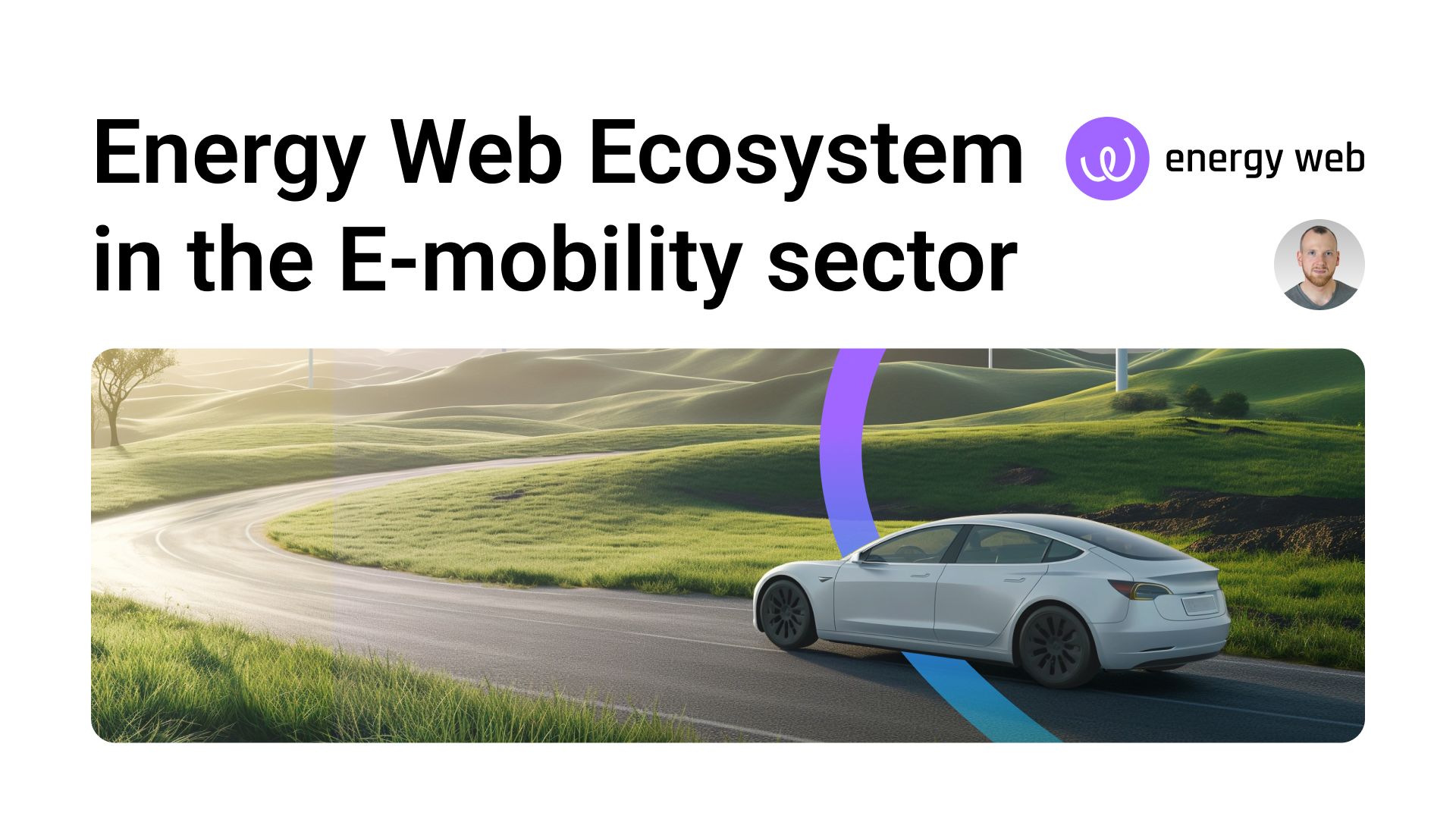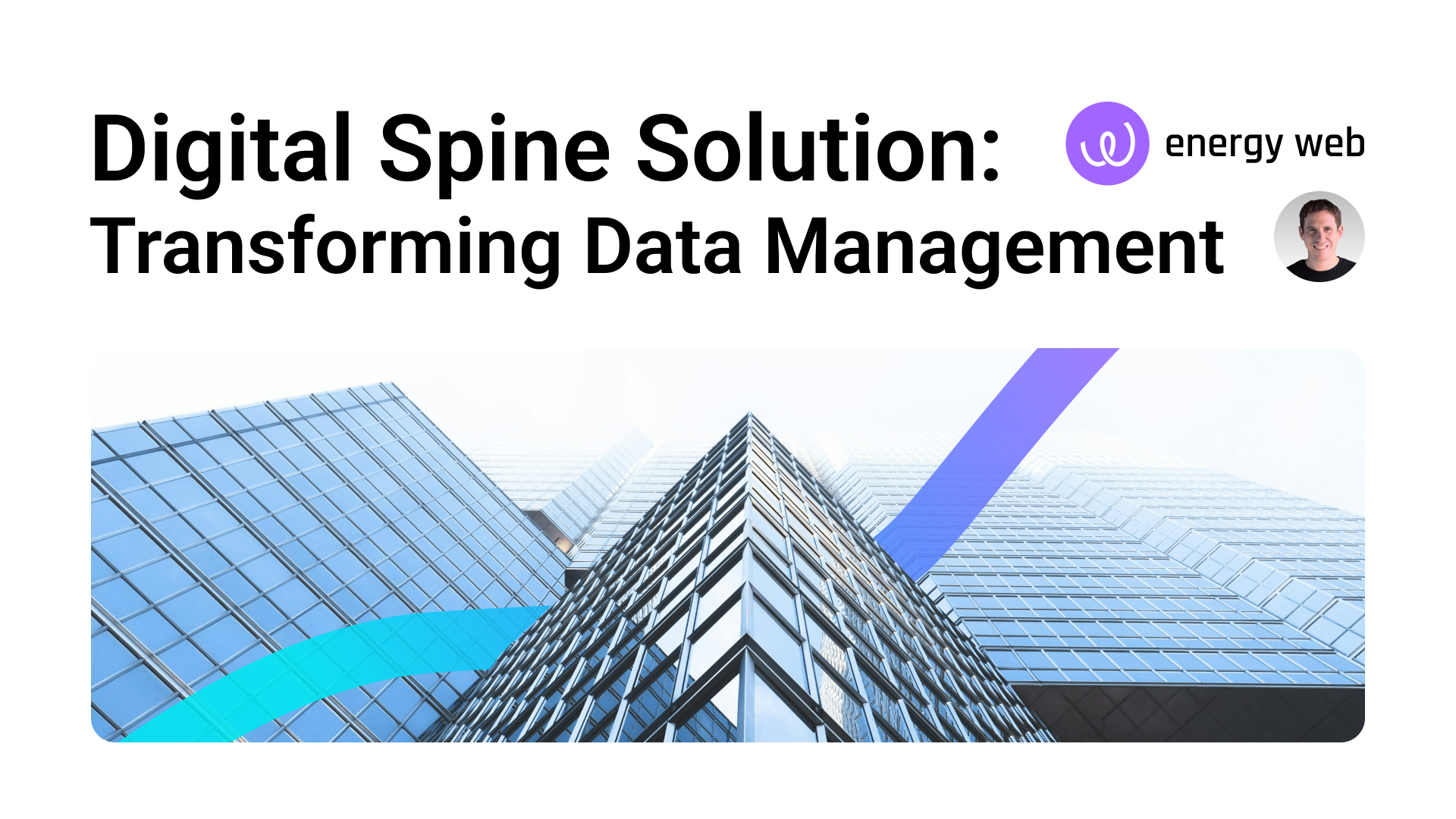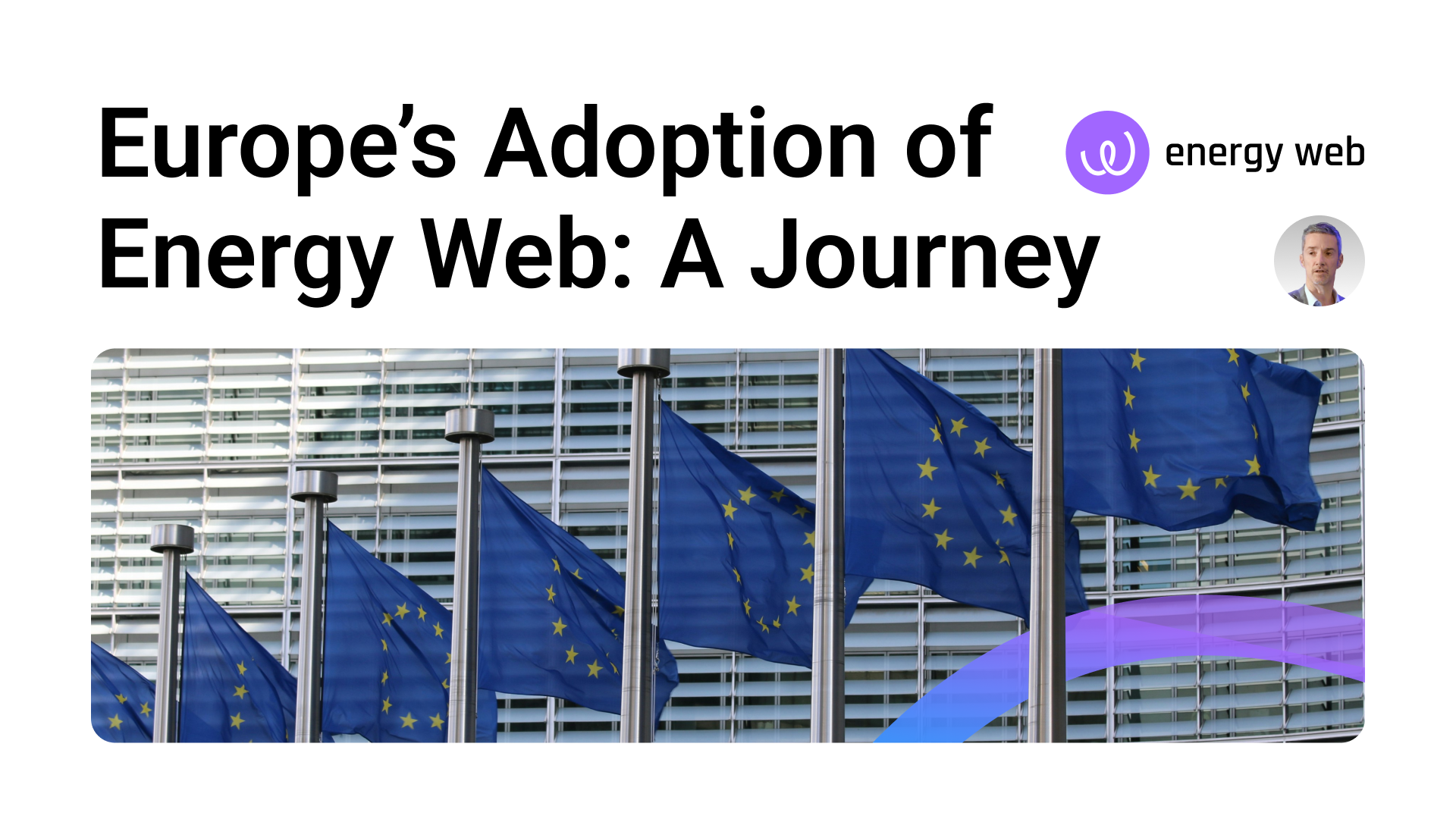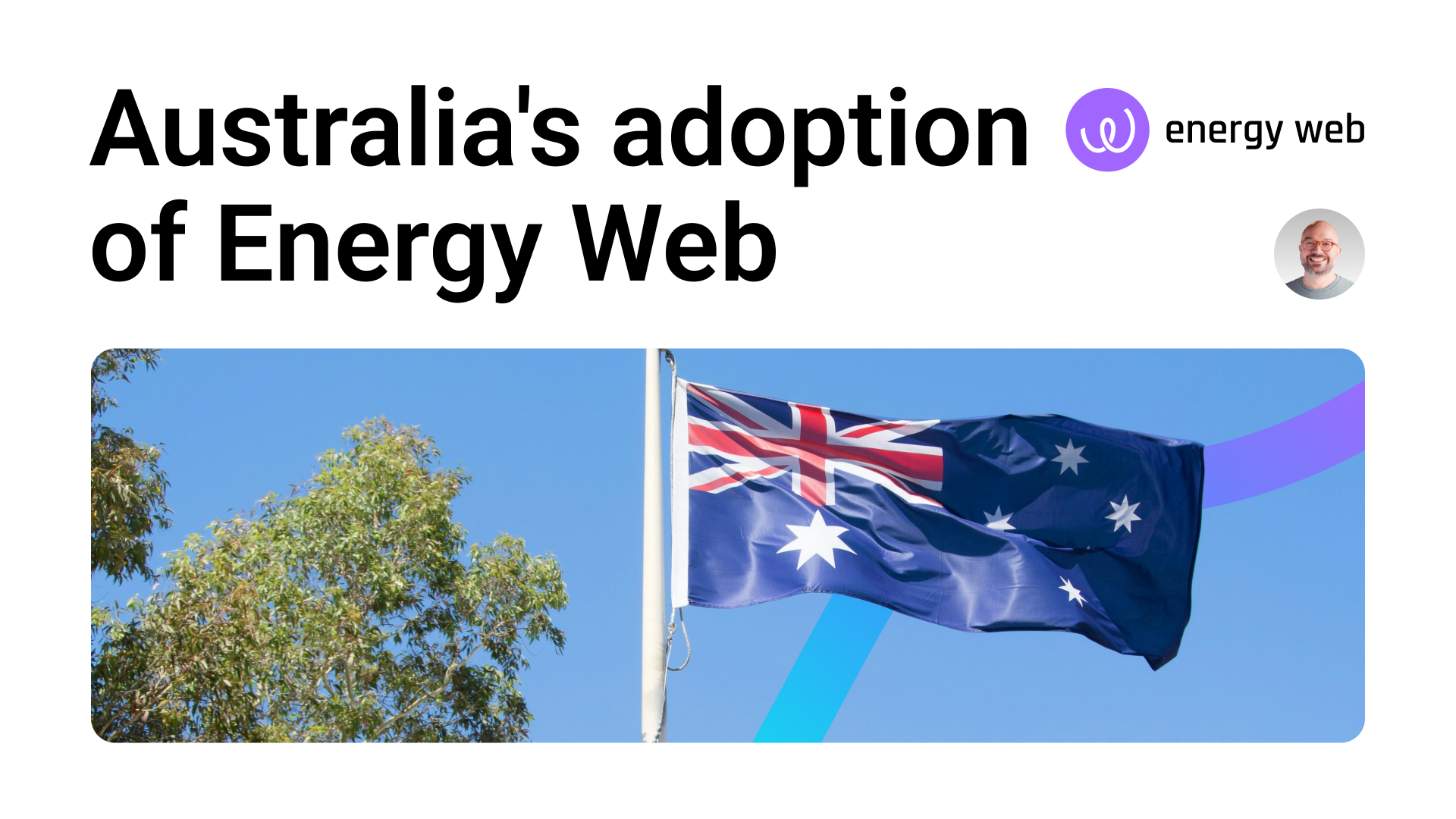Day 2 of the Energy Web Dive 2024 continued to highlight our innovative efforts and advancements in the energy sector. Our team delved into the integration of our technologies within the electric mobility sector, the transformative potential of the Digital Spine solution, and the significant strides made in Europe and Australia. Each session provided valuable insights into how Energy Web's solutions are driving the decarbonization and digitalization of the global energy landscape. Here are the key takeaways from Day 2.
SESSION 1

Speaker: Robert Sprunk
Title: Senior Delivery Lead
Event Topic: Energy Web Ecosystem in E-mobility Sector
Robert Sprunk from the Energy Web Foundation in this session shared insights into their efforts within the electric mobility sector. He discussed two pivotal components: Green Proofs for Electric Vehicles (EVs) and Supplier Choice, shedding light on their significance and synergies.
Electric mobility encompasses various forms of transportation powered by electricity, including vehicles, scooters, bikes, buses, and trucks. The transition to electric vehicles reduces reliance on fossil fuels, mitigating carbon emissions despite initial carbon-intensive production processes
Green Proofs for EVs, abbreviated as GP4EVs, tackles the challenge of ensuring the sustainability of EV charging. While EVs themselves offer environmental benefits, the source of electricity used for charging determines their overall sustainability. Existing proof solutions lack transparency and impact, prompting the need for GP4EVs to provide verifiable proof of renewable energy usage. GP4EVs offer benefits for EV drivers, fleet owners, and OEMs. Drivers gain visibility into the origin of electricity used for charging, fostering trust and environmental impact awareness. Fleet owners and OEMs leverage green proofs to support environmental, social, and governance (ESG) goals, enabling more transparent reporting and access to subsidies.
The Auto Green Charge application, recently launched, empowers EV owners to verify the green energy source of their charging sessions. Users can sign up to become beta testers, ensuring widespread adoption and feedback to refine the application further. Energy Web introduces Supplier Choice for Electric Vehicles, allowing users to select their preferred energy supplier for EV charging. This innovative solution enhances control over energy sourcing, offering flexibility and potential cost savings for EV owners and fleet operators.
Energy Web's involvement in both GP4EVs and Supplier Choice is crucial. Leveraging their digital spine and immobility-specific protocols, Energy Web ensures secure vehicle identity verification and seamless integration with energy market processes. These solutions operate on Energy Web's worker node networks, providing reliability and scalability. Robert Sprunk concludes by inviting further engagement with Energy Web's initiatives in the electric mobility sector. He emphasizes the importance of staying updated through their website, social media channels, and direct communication avenues. As the director of immobility at Energy Web, Sprunk underscores their commitment to transforming electric mobility through innovation and sustainability.
You can watch the full event here: YouTube
SESSION 2

Speaker: Jesse Morris
Title: CEO Energyweb
Event Topic: Digital Spine Solution: Transforming Data Management
In this session, Jesse Morris, CEO of Energyweb, explores the company's efforts to revolutionize the global energy landscape. Morris began by reflecting on Energy Web's previous focus on initiatives like the sustainable aviation fuel registry and partnerships with Bitcoin miners to promote clean mining practices. However, the spotlight shifted towards Energy Web's mission to decarbonize the grid, specifically through its Digital Spine solution.
The Digital Spine, Jesse explained, is a pivotal tool designed to accelerate grid decarbonization by harnessing the potential of distributed energy resources (DERs). These resources, including electric vehicles, charging stations, batteries, and solar systems, are increasingly shaping the energy landscape. Yet, existing frameworks lack the capability to effectively integrate and utilize these assets.
Jesse emphasized the urgency of the challenge, highlighting the exponential growth of DER adoption, particularly in markets like the United States. With millions of electric vehicles projected to hit the roads, the grid faces both opportunities and risks. While DERs offer flexibility, their uncoordinated integration could strain the grid.
To address these complexities, Energy Web's Digital Spine acts as a nervous system for the grid, facilitating rapid and secure data exchange among stakeholders. This infrastructure enables utilities, regulators, and market participants to monitor, interact with, and plan for DERs effectively.
Drawing on real-world examples, he showcased the implementation of Digital Spine solutions in Australia and emerging efforts in the United Kingdom. These initiatives demonstrate the tangible impact of digital infrastructure in enhancing grid resilience and efficiency.
Key to Energy Web's approach is its commitment to openness and decentralization. By offering an open-source platform, Energy Web fosters collaboration and innovation across the industry. Moreover, the integration of decentralized identity management enhances cybersecurity, safeguarding against potential threats.
In conclusion, Jesse urged stakeholders to embrace the Digital Spine as a foundational element in the transition to a cleaner, more resilient grid. With its potential to unlock value and streamline operations, the Digital Spine represents a transformative force in the energy sector's evolution.
As Energy Web continues to advocate for digital innovation and collaboration, the journey towards a sustainable energy future accelerates, one spine at a time.
You can watch the full event here: YouTube
SESSION 3

Speaker: Ioannis Valchos
Title: Commercial Director
Event Topic: Europe’s Adoption of Energy Web
Ioannis Valchos, the Commercial Director at Energy Web, presented an insightful overview of how the European Union is embracing Energy Web technology. The session delved into the role of worker nodes and Energy Web tokens in shaping the continent's energy future, particularly through research and development initiatives.
The discussion revolved around projects funded under two main frameworks: Horizon Europe and Digital Europe. Horizon Europe, with a budget of approximately €100 billion, focuses on various sectors including energy, tackling climate change, and promoting competitiveness and growth. Digital Europe, with €7.5 billion, aims to address challenges in computing, AI, cybersecurity, digital skills, and technology adoption.
Valchos outlined several ongoing and upcoming projects funded under these frameworks. Omega X, for instance, focuses on creating interoperable energy data spaces across Europe, with a budget of €10 million. Similarly, projects like ECS4DRES and U2DEMO target flexible renewable energy systems and peer-to-peer energy exchange, respectively. These projects leverage Energy Web's solutions to facilitate trusted and sustainable energy practices.
The presentation highlighted Energy Web's success in securing funding and participating in numerous projects across Europe. With an impressive success rate of 83.3%, Energy Web has become a key player in driving innovation and collaboration in the energy sector. Valchos emphasized the importance of partnerships and invited potential collaborators to join future projects.
Overall, Energy Web's initiatives underscore its commitment to revolutionizing the European energy landscape through innovative technologies and strategic collaborations.
You can watch the full event here: YouTube
SESSION 4

Speaker: Ian Kelly
Title: Director of Global Delivery
Event Topic: Australia’s Adoption of Energy Web
This session was delivered by Ian Kelly, Director of Global Delivery at Energy Web and it discusses Energy Web's involvement in projects in Australia and outlines their motivations, actions, and future plans. Australia serves as a testbed for the future of energy transition due to its significant adoption of rooftop solar, making it a prime location to experiment with new grid management techniques. Energy Web has participated in projects with Australia's transmission system operator (AEMO) and other stakeholders to address challenges posed by the integration of distributed energy resources into the grid.
They have deployed a decentralized data exchange platform that allows participants to securely and efficiently share information about market and grid conditions. Recent improvements to this platform aim to facilitate easier onboarding for other market participants, enabling them to utilize the system in real market operations rather than simulated environments.
Looking ahead, Energy Web plans to support AEMO and other market participants in further testing the platform in actual market operations. They aim to assess the ease of deployment and usability of the system, with a focus on scalability and readiness for broader adoption. This testing phase is expected to occur later in the year, with the goal of validating the technology's effectiveness and potential for application in other markets beyond Australia.
You can watch the full event here: YouTube
Day 2 of the Energy Web Dive 2024 provided a comprehensive look into our ongoing efforts to integrate cutting-edge technology into the energy sector. From transforming electric mobility and data management to driving innovation in Europe and Australia, Energy Web continues to pave the way for a sustainable and resilient energy future.
Follow us on our Socials




评论 (0)